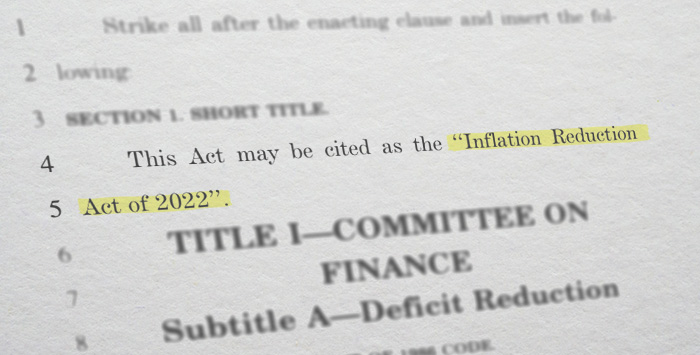Please provide your zip code to see plans in your area.
Featured

Featured

American Rescue Plan Act
What is the American Rescue Plan Act?
What is the American Rescue Plan?
The American Rescue Plan Act of 2021 – H.R. 1319 – was enacted on March 11, 2021. The legislation provides a great deal of financial relief to Americans struggling with the fallout of the COVID pandemic.
Some of the most widely known provisions are the third round of stimulus checks ($1,400 per person, for most Americans) and the extension of additional federal unemployment benefits into September 2021. But there are also several important health insurance provisions in the American Rescue Plan.
How do the American Rescue Plan’s tax provisions affect health insurance?
The American Rescue Plan’s tax provisions affect health insurance in several ways:
- Subsidized buyers who would otherwise have had to repay excess premium tax credits for 2020 did not have to do so.
- The first $10,200 in unemployment compensation from 2020 was not included in taxable income for most people, which may have resulted in larger premium subsidies for some people who had marketplace coverage in 2020. (Although policyholders weren’t required to repay excess subsidies to the IRS for that year, policyholders could still claim additional premium tax credits to which they were entitled.)
- Premium tax credits for 2021 and 2022 were larger and more widely available. And that provision has been extended through 2025 by the Inflation Reduction Act.
Who is eligible for the American Rescue Plan’s premium subsidy enhancements?
Most Americans who buy their own health insurance are eligible for larger subsidies or newly eligible for subsidies under the American Rescue Plan:
- People who were already eligible for subsidies prior to 2021 became eligible for larger subsidies due to the reduction in the percentage of income that people are expected to pay in after-subsidy premiums. This comparison sheet shows several examples.
- People who have a household income over 400% of the federal poverty level may find that they’re newly eligible for a subsidy due to the elimination of the “subsidy cliff.” (For reference, this chart shows where that limit would have been for 2023 coverage, if the ARP and Inflation Reduciton Act hadn’t eliminated it.)
- People with income under 400% of the poverty level who weren’t previously subsidy-eligible (because the benchmark plan was already considered affordable under normal rules) may find that they’re now eligible for a subsidy.
It’s important to understand that premium subsidies (premium tax credits) are only available through the exchange/marketplace in each state. So people who were enrolled outside the exchange had to transition to the exchange in order to claim the tax credits, either upfront or on their tax return next spring. This includes people who had off-exchange ACA-compliant coverage, as well as people enrolled in short-term plans, health care sharing ministry plans, Farm Bureau plans, etc.
How did the American Rescue Plan improve access to coverage for the unemployed?
Throughout 2020, maintaining health insurance coverage was one of many challenges faced by Americans who lost their jobs or saw a reduction in their income due to the pandemic. To address this for 2021, the American Rescue plan ensured access to robust health coverage for people who were receiving unemployment compensation.
Anyone receiving unemployment compensation at any time in 2021 was eligible for full premium subsidies and full cost-sharing reductions throughout 2021 (unless they subsequently became eligible for an employer-sponsored plan or Medicare, in which case the subsidies would end at that point just as they normally do in that situation).
Who was not helped by the American Rescue Plan?
The American Rescue Plan did not fix the family glitch, but the IRS finalized regulations in 2022 to fix that issue starting in 2023.
And the American Rescue Plan also did not solve the Medicaid coverage gap in the states that have not yet expanded Medicaid. But as noted above, it does provide additional funding in an effort to entice more states to expand Medicaid.
How long will the American Rescue Plan’s provisions be in effect?
For now, the American Rescue Plan’s health insurance provisions are temporary, even though some of them have been extended by the Inflation Reduction Act:
- The amnesty for repayment of excess premium tax credits only applied to 2020.
- The full premium tax credits and full cost-sharing reductions for people receiving unemployment benefits were only applicable for 2021.
- The elimination of the “subsidy cliff” is applicable for 2021 through 2025 (this includes an Inflation Reduction Act extension).
- The reduction in the percentage of income that people have to pay for the benchmark plan is applicable for 2021 through 2025 (this includes an Inflation Reduction Act extension).
It’s possible that the enhanced premium tax credits (ie, the elimination of the subsidy cliff and the reduction in the percentage of income that people have to pay in after-subsidy premiums) could be extended again or made permanent by future legislation.
Related articles
The Inflation Reduction Act would extend ARP's health insurance subsidy enhancements – helping millions eligible for ACA marketplace subsidies.
Legislation signed today provides substantial premium tax credits and cost-sharing reductions to Americans receiving unemployment benefits.
Losing your job in 2023 doesn’t mean you have to go without health coverage. Here’s how to find coverage right now.











